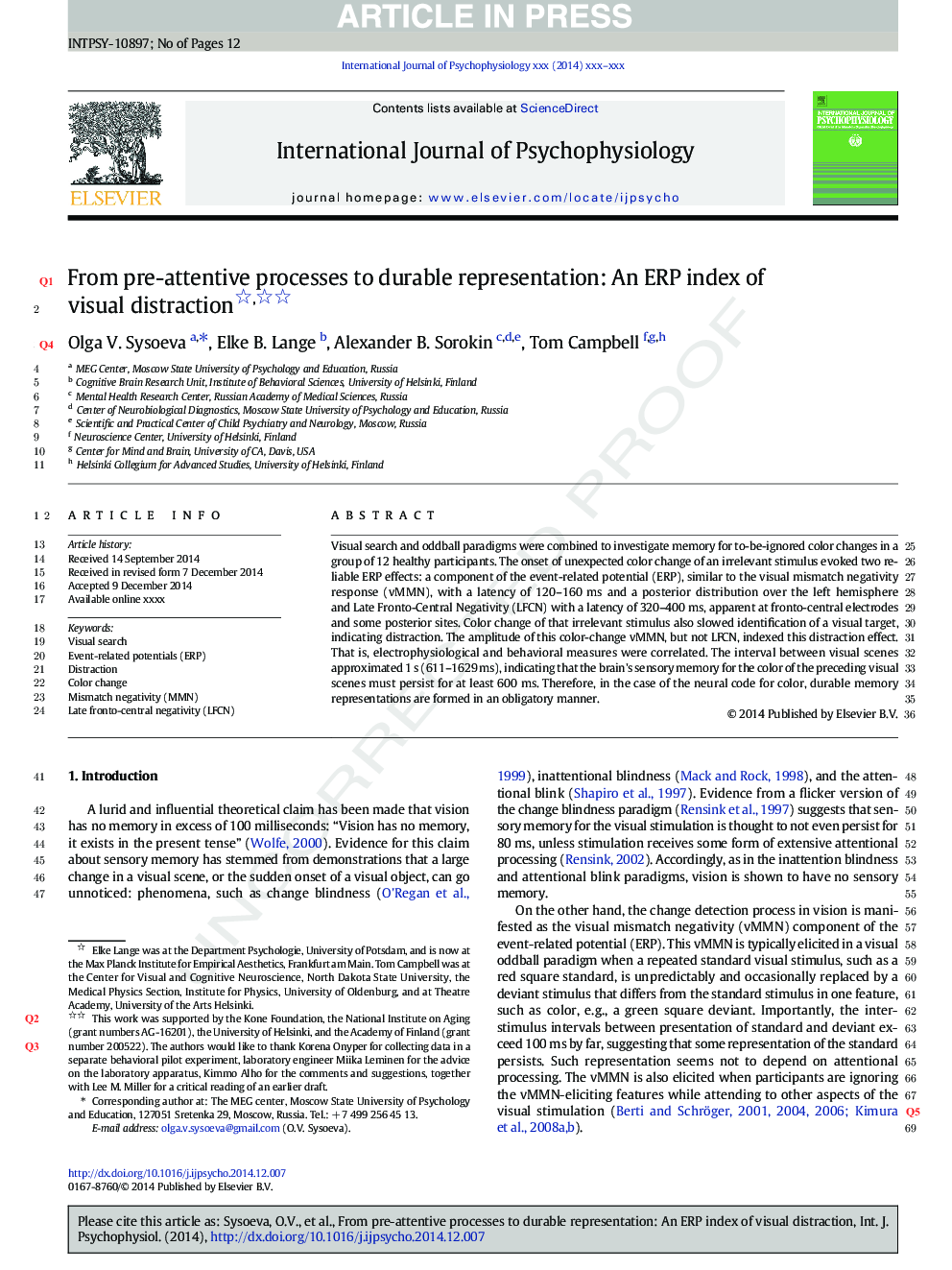| Article ID | Journal | Published Year | Pages | File Type |
|---|---|---|---|---|
| 7295478 | International Journal of Psychophysiology | 2015 | 12 Pages |
Abstract
Visual search and oddball paradigms were combined to investigate memory for to-be-ignored color changes in a group of 12 healthy participants. The onset of unexpected color change of an irrelevant stimulus evoked two reliable ERP effects: a component of the event-related potential (ERP), similar to the visual mismatch negativity response (vMMN), with a latency of 120-160Â ms and a posterior distribution over the left hemisphere and Late Fronto-Central Negativity (LFCN) with a latency of 320-400Â ms, apparent at fronto-central electrodes and some posterior sites. Color change of that irrelevant stimulus also slowed identification of a visual target, indicating distraction. The amplitude of this color-change vMMN, but not LFCN, indexed this distraction effect. That is, electrophysiological and behavioral measures were correlated. The interval between visual scenes approximated 1Â s (611-1629Â ms), indicating that the brain's sensory memory for the color of the preceding visual scenes must persist for at least 600Â ms. Therefore, in the case of the neural code for color, durable memory representations are formed in an obligatory manner.
Keywords
Related Topics
Life Sciences
Neuroscience
Behavioral Neuroscience
Authors
Olga V. Sysoeva, Elke B. Lange, Alexander B. Sorokin, Tom Campbell,
